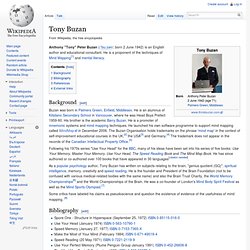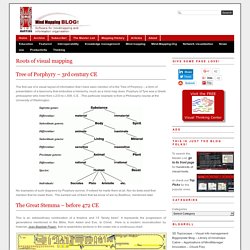

Map–territory relation. "The map is not the territory"[edit] The expression "the map is not the territory" first appeared in print in a paper that Alfred Korzybski gave at a meeting of the American Association for the Advancement of Science in New Orleans, Louisiana in 1931:[1] In Science and Sanity, Korzybski acknowledges his debt to mathematician Eric Temple Bell, whose epigram "the map is not the thing mapped" was published in Numerology.[2] A) A map may have a structure similar or dissimilar to the structure of the territory...B) A map is not the territory.

Korzybski's dictum "the map is not the territory" is also cited as an underlying principle used in neuro-linguistic programming, where it is used to signify that individual people in fact do not in general have access to absolute knowledge of reality, but in fact only have access to a set of beliefs they have built up over time, about reality. This concept occurs in the discussion of exoteric and esoteric religions. Historian of religions J. Alfred Korzybski. Alfred Habdank Skarbek Korzybski ([kɔˈʐɨpski]; July 3, 1879 – March 1, 1950) was a Polish-American independent scholar who developed a field called general semantics, which he viewed as both distinct from, and more encompassing than, the field of semantics.

He argued that human knowledge of the world is limited both by the human nervous system and the languages humans have developed, and thus no one can have direct access to reality, given that the most we can know is that which is filtered through the brain's responses to reality. His best known dictum is "The map is not the territory". Early life and career[edit] Korzybski was educated at the Warsaw University of Technology in engineering. During the First World War Korzybski served as an intelligence officer in the Russian Army. His first book, Manhood of Humanity, was published in 1921. General semantics[edit] He sought to train our awareness of abstracting, using techniques he had derived from his study of mathematics and science. Tony Buzan. Anthony "Tony" Peter Buzan (/ˈbuːzən/; born 2 June 1942) is an English author and educational consultant.

He is a proponent of the techniques of Mind Mapping[1] and mental literacy. Background[edit] Buzan was born in Palmers Green, Enfield, Middlesex. He is an alumnus of Kitsilano Secondary School in Vancouver, where he was Head Boys Prefect 1959-60. His brother is the academic Barry Buzan. Following his 1970s series "Use Your Head" for the BBC, many of his ideas have been set into his series of five books: Use Your Memory, Master Your Memory, Use Your Head, The Speed Reading Book and The Mind Map Book. As a popular psychology author, Tony Buzan has written on subjects relating to the brain, "genius quotient (GQ)", spiritual intelligence, memory, creativity and speed reading. Houghton SC.L9695.482ab - Ramon Llull, 1505 - Ramon Llull. Roots of visual mapping. Tree of Porphyry – 3rd century CE The first use of a visual layout of information that I have seen mention of is the Tree of Porphyry – a form of presentation of a taxonomy that embodies a hierarchy, much as a mind map does.

Porphyry of Tyre was a Greek philosopher who lived from c.233 to c.309, C.E. . This particular example is from a Philosophy course at the University of Washington. No examples of such diagrams by Porphyry survive, if indeed he made them at all. Nor do texts exist that mention that he made them. The Great Stemma – before 472 CE This is an extraordinary combination of a timeline and 15 “family trees”.
Click to enlarge Its many provenances are too complicated to include here, so to follow them further, you will have to go to Jean-Baptiste’s site where they set out in great detail. To give some idea of how the modern work relates to the codex, here is a small portion and notional reconstruction: Boethius, Arbor Porphyriana – circa 520 More detail of this can be found here. Porphyry (philosopher) Porphyry of Tyre (/ˈpɔrfəri/; Greek: Πορφύριος, Porphyrios, AD c. 234 – c. 305) was a Neoplatonic philosopher who was born in Tyre.[1] He edited and published the Enneads, the only collection of the work of his teacher Plotinus.
He also wrote many works himself on a wide variety of topics.[2] His Isagoge, or Introduction, is an introduction to logic and philosophy,[3] and in Latin translation it was the standard textbook on logic throughout the Middle Ages.[4] In addition, through several of his works, most notably Philosophy from Oracles and Against the Christians, he was involved in a controversy with a number of early Christians,[5] and his commentary on Euclid's Elements was used as a source by Pappus of Alexandria.[6] Imaginary debate between Averroes (1126–1198 AD) and Porphyry (234–c. 305 AD). Monfredo de Monte Imperiali Liber de herbis, 14th century.[9] The Introduction was translated into Arabic by Abd-Allāh Ibn al-Muqaffaʿ from a Syriac version. Ad Gaurum ed.